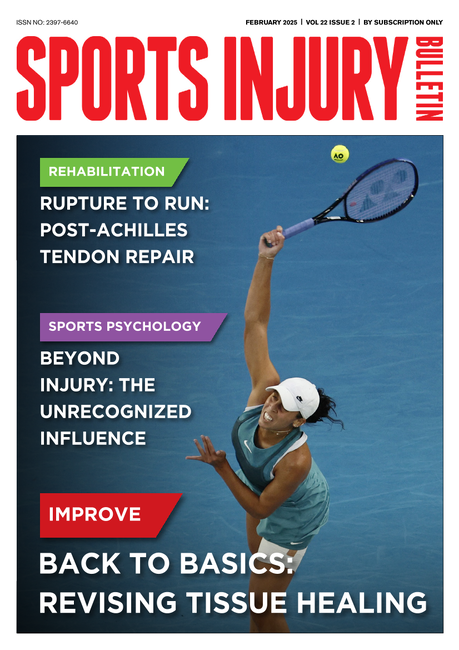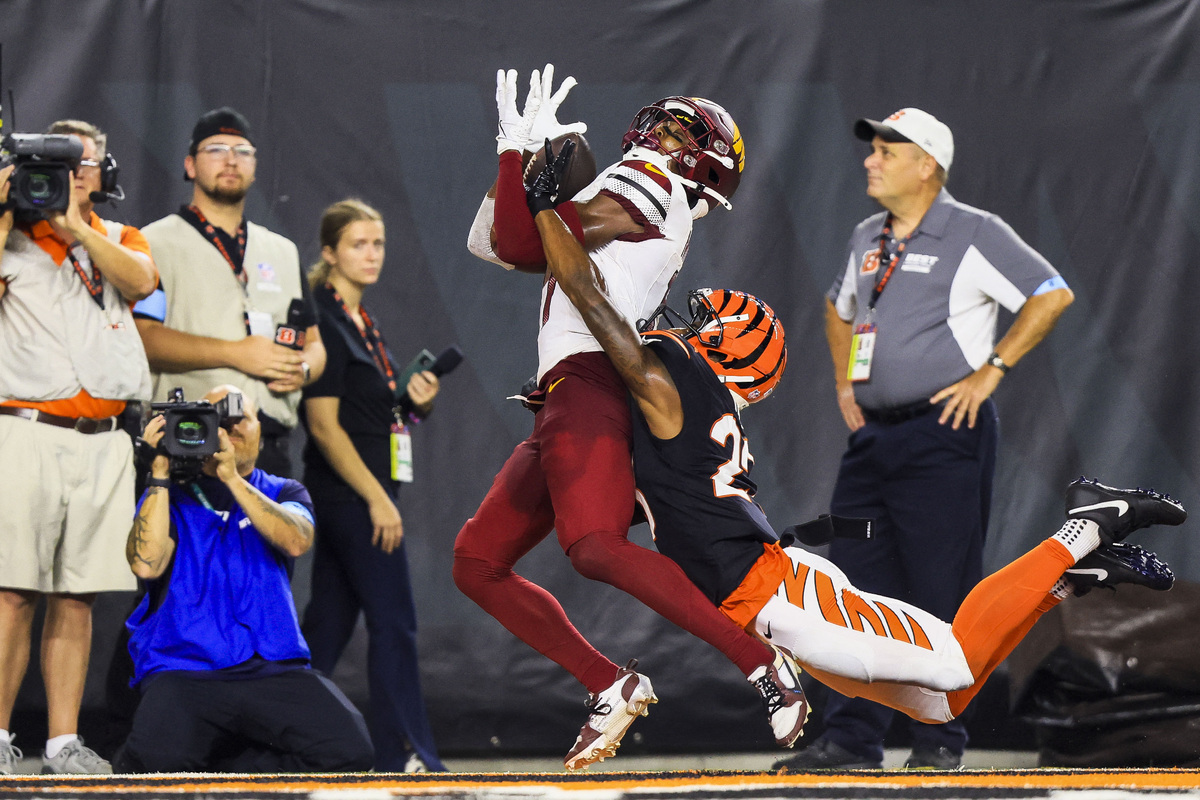You are viewing 1 of your 1 free articles
Taking the headache out of concussion management

Quarterback Troy Aikman grabs his helmet after being chased out of bounds, 2000. Aikman did not return to the game and was diagnosed with a concussion.
The days of lying in a dark room until concussion symptoms resolve are over. Research now shows that although exercise may make concussion symptoms worse, finding that sub-threshold level of activity –movement that doesn’t trigger symptoms – may help resolve the effects of a concussion(1). Concussive symptoms can be varied and, as Alicia Filley explains, their persistence and severity are independent of the seriousness of the initial injury. Kay Robinson goes on to further describe post-concussive disorder and the approach to treating long-lasting symptoms.
As a review by Harvard University found, however, most who suffer a sports-related concussion improve in about a month(2). The study notes that younger athletes and those with a history of prior concussions may take longer to recover. With the staggering numbers of concussions suffered each year in the youth population - nearly 2 million - the feasibility of treating all these athletes in a physical therapy clinic seems daunting(1).
Therefore, researchers in Seattle developed a study to evaluate the efficacy of a guided sub-threshold exercise program to improve the effects of concussion including physical symptoms, quality of life, and fear-avoidance related to activity in an adolescent population with persistent concussive symptoms. Thirty subjects between the ages of 12 and 18-years-old, nearly evenly split between male and female genders, with two or more concussive symptoms lasting more than three weeks, completed the study. Nearly half reported a prior concussion.
Researchers randomly assigned subjects to a control or intervention arm. All participants were evaluated at baseline using the modified Buffalo Concussion Treadmill Test (BCTT), a test which identifies the level of activity (as measured by heart rate) that triggers concussion symptoms. The control participants were given a home program of daily gentle stretching. The stretching routine took an estimated five to ten minutes each day to complete.
The researchers provided the intervention subjects with a six-week aerobic exercise program, which they performed daily in their home environment. The program called the sub-threshold exercise program (STEP) was scaled according to the subject’s baseline activity level, kept at 80% of the heart rate that caused symptoms during the BCCT, and increased each week by five to 10 minutes. The intervention group also received a phone call from a research assistant each week to monitor their progress. If they reported increased symptoms during exercise, then the heart rate intensity was decreased. Participants could choose their aerobic activity; thus, the program was highly individualized.
Subjects in both arms of the study showed improvement in the measure of moderate to vigorous physical activity as measured by wearing an accelerometer for five to seven days. Both groups also showed a decline in concussive symptoms, and parental and child fear-avoidance (see figures 1-2). Although the difference didn’t reach a level of significance, the decline in all symptoms was more rapid in the intervention arm of the study.
This study had several limitations. Namely, the sample size was small and lacked diversity. Much of the activity data was self –reported and the activity that was measured used a hip-mounted accelerometer which doesn’t measure all sports activities. Despite these limitations, there are three key points that clinicians can utilize.

Figure 1: Effect of a sub-threshold exercise program (STEP) on concussive symptoms in a young population(1).

Figure 2: Effect of the Sub-Threshold Exercise Program (STEP) on fear-avoidance in parents of concussed children and children with concussion(1).
Clinical implications
What this means for clinicians treating youth with persistent concussive symptoms:
- Exercise at a sub-threshold level may accelerate the rate of improvement for those with concussions.
- Sub-threshold aerobic exercise programs can be administered effectively with minimal in-office visits.
- Depending on license stipulations, monitoring can be done by para-professionals, freeing clinicians to serve in-office patients.
References
Newsletter Sign Up
Subscriber Testimonials
Dr. Alexandra Fandetti-Robin, Back & Body Chiropractic
Elspeth Cowell MSCh DpodM SRCh HCPC reg
William Hunter, Nuffield Health
Newsletter Sign Up
Coaches Testimonials
Dr. Alexandra Fandetti-Robin, Back & Body Chiropractic
Elspeth Cowell MSCh DpodM SRCh HCPC reg
William Hunter, Nuffield Health
Be at the leading edge of sports injury management
Our international team of qualified experts (see above) spend hours poring over scores of technical journals and medical papers that even the most interested professionals don't have time to read.
For 17 years, we've helped hard-working physiotherapists and sports professionals like you, overwhelmed by the vast amount of new research, bring science to their treatment. Sports Injury Bulletin is the ideal resource for practitioners too busy to cull through all the monthly journals to find meaningful and applicable studies.
*includes 3 coaching manuals
Get Inspired
All the latest techniques and approaches
Sports Injury Bulletin brings together a worldwide panel of experts – including physiotherapists, doctors, researchers and sports scientists. Together we deliver everything you need to help your clients avoid – or recover as quickly as possible from – injuries.
We strip away the scientific jargon and deliver you easy-to-follow training exercises, nutrition tips, psychological strategies and recovery programmes and exercises in plain English.










